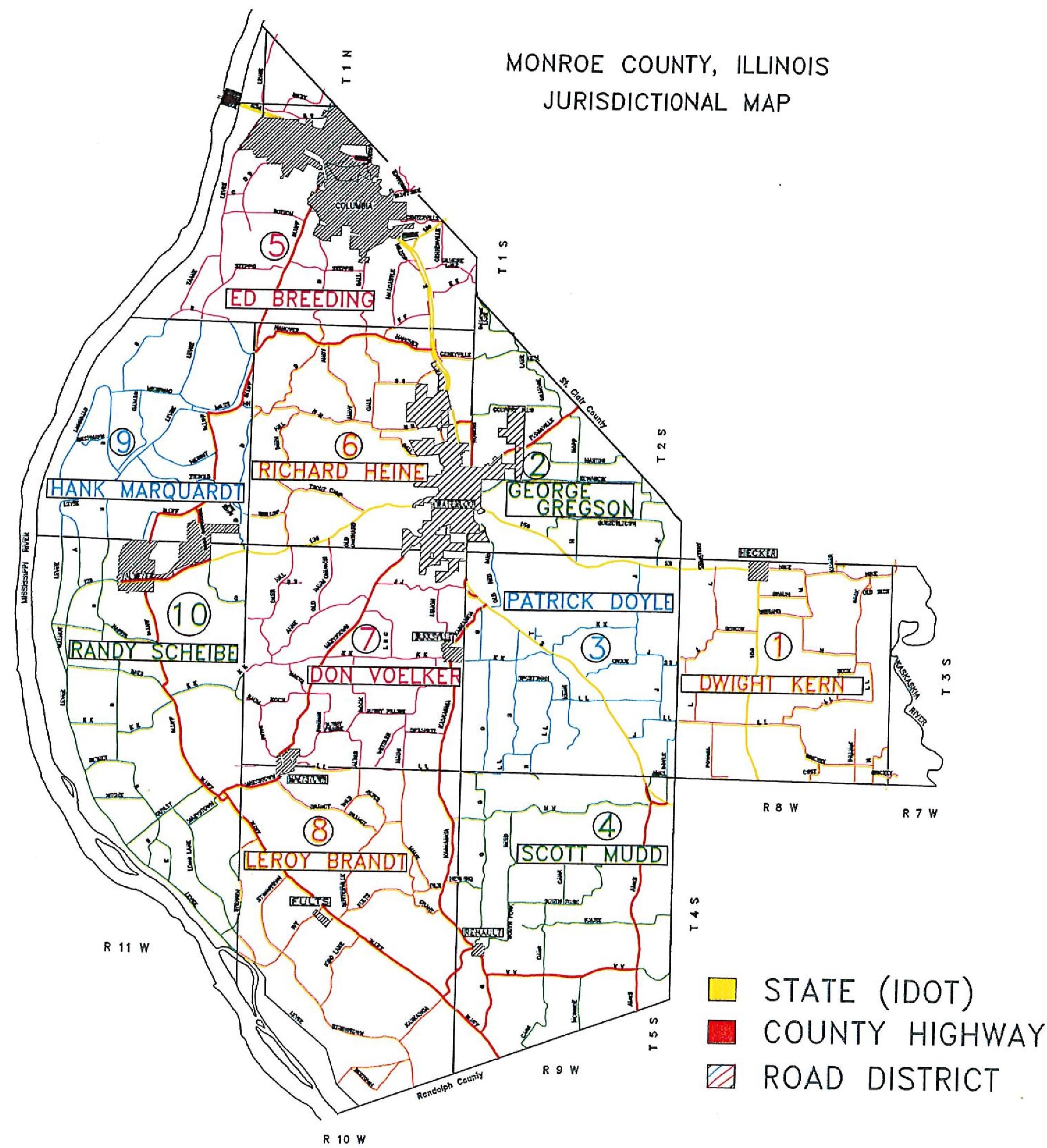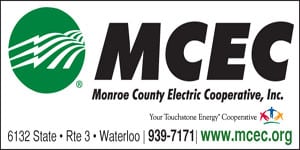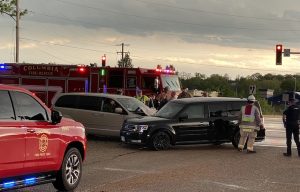What does a road district commissioner do?

One of the more surprising aspects of this year’s municipal election is that there are three contested races for the typically uncontentious position of road district commissioner.
In Road District No. 6, incumbent Richard Heine is facing a challenge from James Breidecker. That district runs roughly from Hanover Road north of Waterloo to Route 156 in Waterloo.
Road District No. 7 will see a race between incumbent Don Voelker and Brad Luther. That district covers Route 156 south to LL Road in Maeystown.
Finally, Road District No. 9 has an election between Jason Niebruegge and Floyd Floarke Jr. That district covers the rural area of B Road in the northwest part of the county to Bluff Road just north of Valmeyer.
But what do these elected officials, who are far from the spotlight, actually do?
The responsibilities of road district commissioners are laid out in statute, though Monroe County Engineer Aaron Metzger said the specific duties are not always clear.
“What they do is a pretty broad and vague concept,” Metzger said. “In a nutshell, they are responsible for maintaining the road district roads within their districts.”
According to state law, this can include determining and certifying a district’s tax levy, laying out, altering, widening or vacating roads, managing road district money, constructing, maintaining and repairing all roads – including through entering contracts, employing laborers and purchasing machinery – safely storing machinery and equipment, maintaining and constructing any necessary signage and ensuring all necessary lighting is provided.
To perform those tasks on all roads not under the jurisdiction of Illinois or the county highway department, road district commissioners may be compensated better than expected and manage more money than some may guess.
Per the county’s annual road district data report for 2020, the salary for the road district commissioner ranged from $21,114 in Road District No. 1 to $54,570 in Road District No. 6.
Those districts are in the eastern part of the county from Nike Road to Brickey Road and in the northern tip of the county from the northernmost part of Levee Road to LL Road, respectively.
Metzger said the clerks’ salaries are set at $2,600, with the rest going to the commissioner. State law requires the county board to set the salary for commissioners, who serve four-year terms and must have resided within their road district for at least a year.
Funding for road districts comes from three sources, the smallest of which is the State Replacement Tax. The two largest sources of funding are property taxes and the Motor Vehicle Fuel Tax, with some districts getting more in real estate taxes and others getting more in fuel tax dollars.
For taxes payable in 2020, the county’s road districts had tax rates ranging from .48771 percent in Road District No. 1 to .55379 percent in Road District No. 5.
With the different tax rates and amounts from each funding source, the total money each district gets also varies.
According to the 2020 report, Road District No. 9 had $207,936 in revenue last year, while Road District No. 5 had $511,666.
Another key metric is dollars per mile of road, with Road District No. 10 getting just $4,842 per mile on one end of the spectrum and Road District no. 6 getting $13,375.
The 10th district is in the southwest part of the county, ranging from A Road near Valmeyer south to Steffen Road.
All of the districts, however, had a surplus in their budgets.
Metzger said the destination of that leftover funding depends upon its source.
“You can accumulate that to no end,” he said of motor vehicle fuel taxes, which rollover each year. “The real estate taxes, if there’s a surplus, it goes into the next year’s budget.”
The amounts each district spends varies, but, generally, there are a few main expenditures.
Usually, a district spends the majority of its money on contracts for work, equipment purchases, repairs and supplies, road and bridge materials, labor, fuel and oil and the salary of its commissioner and clerk.
In Road District No. 6, for example, which spent the most money in the year covered by the 2020 report, it spent $129,521 on work contracts, $137,127.85 on equipment purchases, $54,570 on salaries, $24,724 on labor, $24,190.2 on road and bridge materials, $15,675 and on repairs and supplies.
That district spent $424,530.60 for the 2019-20 fiscal year.
Conversely, Road District No. 9 spent just $75,443.67, with its largest expenses being $28,942.50 for salaries, $10,679.99 for equipment purchases and $10,398.75 for the use of other equipment.
Metzger said there is not necessarily a consistent pattern of certain districts spending more money than others because much of that depends on how many hours of work are done in a given district each year, and that varies, as does the cost of the labor depending on what it is and who does it.
“It depends on if they have a project,” Metzger summarized. “It just depends on what they’ve got going on.”








